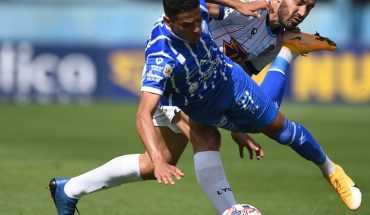Pablo Ilabaca makes a mental review of his extensive career. He pulls out accounts and comes to a conclusion: it took almost 30 years and 26 studio jobs to sign for the first time an album simply with his name.” It’s very strange but it took me my whole life to sign with my real name something. The first years of the Chancho en Piedra called me K-V-Zón, I signed as well as the fourth or fifth album. The fifth I signed as Jaco Sánchez and then I released albums under that pseudonym”, summarizes the musician who began his journey in 1994 with the band ‘Locura Espacial’. But it was in July that that finally ended. During that month the eldest of the Ilabaca brothers released “Canciones para conversar con la muerte”, a personal album and released with his name and surname, no longer under a veneer or under the wing of a collective project. It is a work of 10 songs that, as its title warns, are inspired by the musician’s relationship with death. Although he warns that there is more.” This album started because I made a song to relate the death of my grandfather, who died in the El Teniente mine in the year 45 (‘Teniente 1945’). From there I began to think about the theme of death, but not only about physical death, but about the death of childhood, the death of a love, the death of a memory. Then there began to turn the concept towards transformation, “explains the composer. Thus, he says, songs with memories of his childhood such as ‘En el Melonal’ and others inspired by concepts such as the passage from day to night (‘Pale night form’) or events such as the birth of his daughter Amapola (‘Tonada para una guagüita newborn’) were emerging.” But it’s true that I always had an issue with death. When I was a kid I had several paranormal moments and with the Chancho I composed songs like ‘Lophophora’, ‘Voy a resurrectar’, ‘Da la claridad a nuestro sol’ or ‘Todo el mundo will want to leave’, which I also included in this album”, says Ilabaca. “So it’s a topic that always caught my attention, always inspired me. But because this was such a personal record, I had to put my name to it.” And although the theme is recurring, the way the album was created was not: accustomed to being the guitarist of the projects in which he participates, the musician this time left the instruments aside to focus on singing. Instead, the instruments were taken over by a long list of guest musicians including Martín Benavides (co-producer of the album), Titae Lindl, Nano Stern, Ismael Oddó and Felipe Metraca of Como Asesinar a Felipes.” I think I’ve been leaving the guitar aside a long time ago. Since I started to resume the music of Jaco Sánchez in 2017, a year before I left the Chancho en Piedra I was focusing more on singing”, explains the composer. “And it coincided with the fact that I started to visualize this album as something totally different from what I had done before and I didn’t want to play it with an established band but I wanted to look for different elements that could enrich the music. And those elements are the different instrumentalists they can play. That’s where all these friends came together.” What does this record represent in your career? This record is completely new to me too. The way it was done, the meaning it has. This is a concept that has to do with transformation and manifests itself in everything from the theme to the way it is done and its sound. The songs have a common denominator that can be waltzes, tunes or ternary rhythms, and has particularities such as that the tuba replaces the electric bass or that it has string arrangements on which I appear like a crooner singing. All of that makes it a totally different record in my career. Speaking of transformations, this album comes three years after your departure from Chancho en Piedra. With the distance, what is your assessment of that decision? How do you remember that stage that was a big part of your life? Sure, it was strong to step aside from a project you founded, but it was totally necessary. I already needed to leave the group because I do a lot of other things, like 31 Minutos, Jaco Sánchez and this particular album, which I think I couldn’t have done with all my attention if I had been in the Chancho, because the Chancho consumed a lot of time and a lot of energy. It’s a very big band that was no longer like one’s, it was people’s. And I wasn’t liking that concept that much anymore. But I see it super well, I love having stepped out of my comfort zone and being scratching my own nails at total independence. And how do I remember my time at Chancho en Piedra? With a lot of love. They were wonderful years. Now more than ever I’m wanting to escI’m going to start later because because because I started so young, at 17, I’m going to forget some. But that, I have many beautiful memories, we are still friends and all good. You said you do a lot of things. Do you already have projects planned for the future? Now I’m making music for two series. One is the Movistar Prisoners series, and the other is an English-based animated series called “Doggy World”. Also coming is the vinyl release of “Songs to converse with death” and on August 23 we will announce the live release. And in March of next year I’m going to release a new album. But I don’t want to talk about it yet because it would be disrespectful to my little people.And that album would be like Pablo Ilabaca? Yes, like Pablo Ilabaca. It’s almost ready.
translated from Spanish: The long road that led Pablo Ilabaca to release just the first album with his real name
August 2, 2021 |





